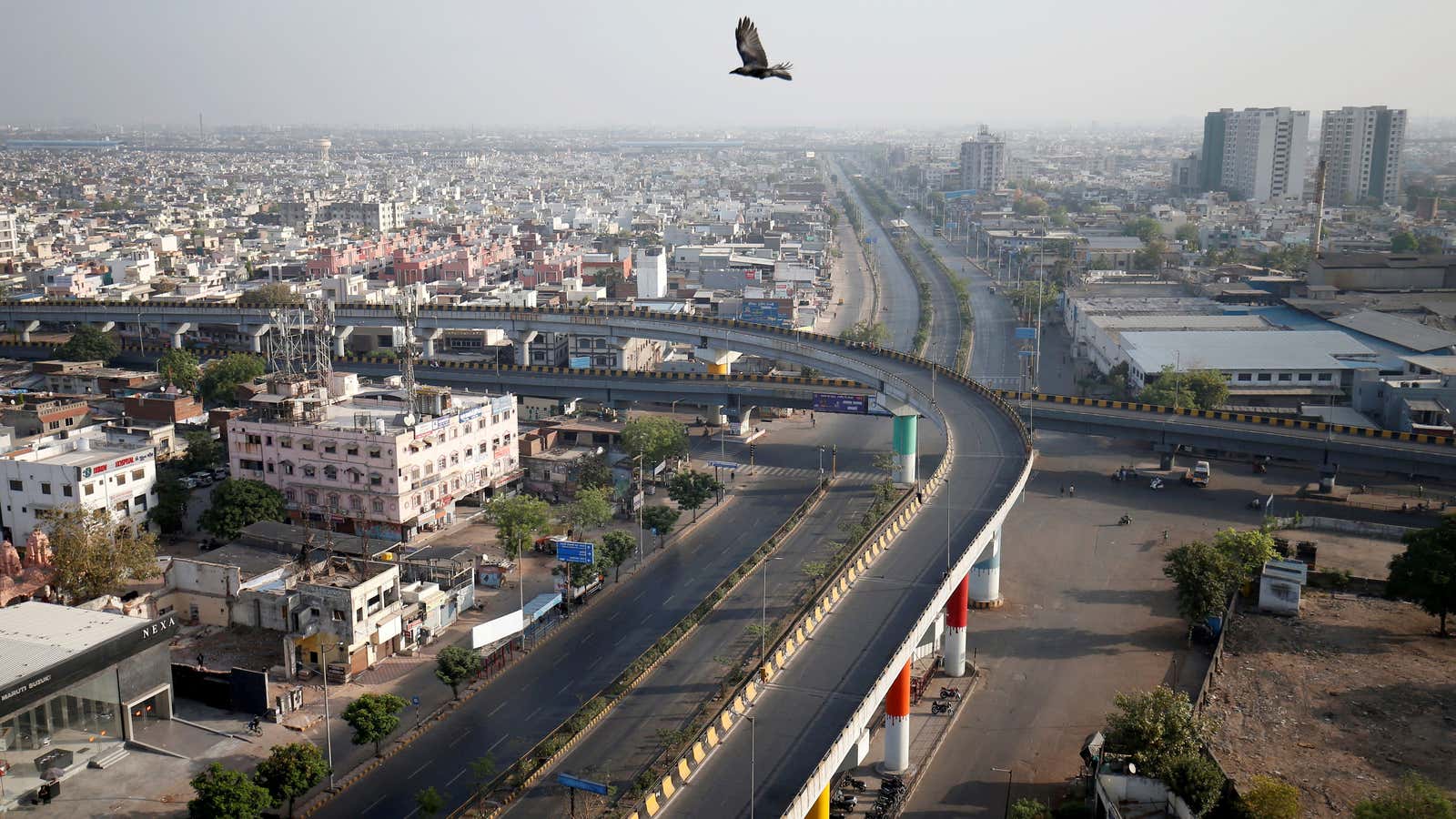The Covid-19 outbreak and stringent lockdowns over the last 18 months made the Indian economy contract for the first time in more than 40 years. But despite a devastating second wave in April, the economy has since shown signs of improvement, partly driven by increased demand for Indian products, which has led to growth in exports and factory output.
Business activity has largely recovered to pre-pandemic levels, but the challenge is to maintain that trajectory. And while the supply of most goods has stabilized, economic growth can only be sustained if consumer demand grows considerably.
India’s GDP path to pre-pandemic levels
India’s GDP surged 20.1% in the April-June quarter—that’s the fastest pace since the mid-1990s when official quarterly data first became available. It came from a low base, admittedly, with the economy having shrunk by 24.4% in the same period in 2020.
India’s economy should return to close to its pre-pandemic size over the next two quarters, according to Mumbai-based research firm QuantEco Research. Meanwhile real growth rates could return to pre-pandemic levels in the financial year ending in March 2026.
Furthermore, gross value added (GVA)—a more representative measure of economic activity—grew 18.8% to Rs30.48 lakh crore ($415 billion) compared to the corresponding period a year ago.
Aside from the low base effect, large Goods and Services Tax (GST) collections and less stringent lockdowns by state governments in the second wave of Covid-19 also lifted India’s GDP growth.
However, a possible third wave of Covid-19 in the coming months could set back India’s economic recovery. Authorities seem to have downplayed these risks to economic growth in their latest monthly economic report (pdf). The Reserve Bank of India predicts GDP growth in the financial year ending March 2022 of 9.5%.
Such optimism from the authorities seems at odds with downgrades by most international institutions and credit rating agencies.
India’s trade and consumption story
India’s merchandise exports jumped 45% to $33 billion in August, on account of growth in capital-intensive segments such as engineering goods, petroleum products, gems and jewelry, and chemicals. Notably, these exports remained above $30 billion for the sixth consecutive month in August but slipped off the record high of $35.17 billion in July.
“The rise in India’s exports could be attributed largely to the low base effect, pick-up in growth in advanced economies, and the resultant increase in global import demand,” India Exim Bank said in a statement. “Increase in commodity prices have also contributed to the increase in India’s exports.”
However, the uncertainty over domestic consumption makes the country prone to trade imbalances.
Gold is also a factor here; a surge in gold imports ahead of the festive season pushed the merchandise trade deficit to a four-month high of $13.87 billion in August, compared to $8.2 billion at the same time a year ago.
“Gold imports surged further to a five-month high of $6.7 billion in August and were responsible for 88% of the rise in the merchandise trade deficit relative to July 2021,” Aditi Nayar, chief economist at rating agency ICRA told The Hindu newspaper.
India’s r
ecovering supply chains
While the demand side faces uncertainty, supply chains have been recovering.
The composite purchasing managers’ index for manufacturing and services released by London-based IHS Markit surged to 55.4 in August—up from 49.2 in the preceding month. A reading below 50 means contraction.
These positive developments are echoed by the Nomura India Business Resumption Index that rose to 101.9 for the week ended Sept. 12, from 100.6 the previous week. The index shows that the economic recovery is above the pre-pandemic level of 100. The index takes into account Apple and Google mobility data, labor force participation, and power demand.
The index marked the second-highest reading after the record high of 102.8 at the end of August. While demand for energy remained weak, the labor participation rate was largely stable at 40.9%.
A further lift in the economic activity is likely as the festive season kicks in. The key will be to monitor Covid-19 developments and increase the pace of vaccinations.
“Swift vaccinations can allow the economy to exit the pandemic orbit,” says the QuantEco Research report. “So far, India has vaccinated 37.3% of its population with a single dose and 11.1% being completely vaccinated…As per our estimate, India can vaccinate close to 100% of its adult population by the end of December.”
